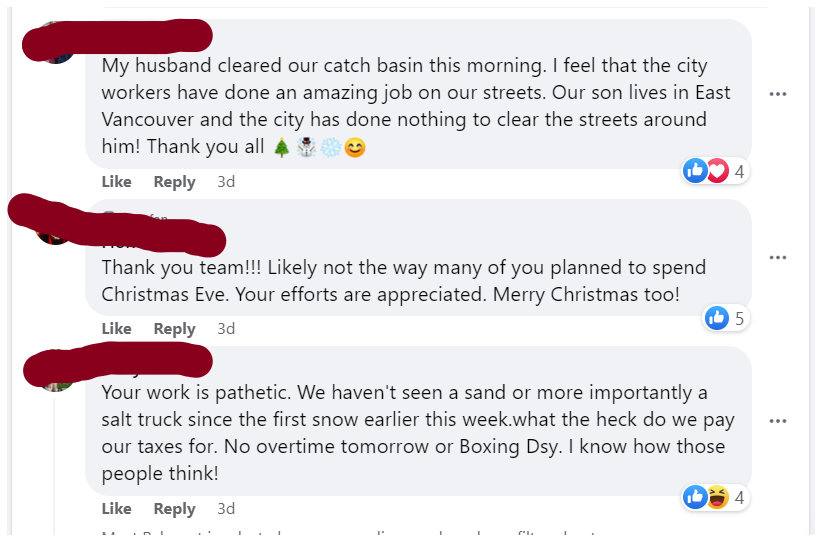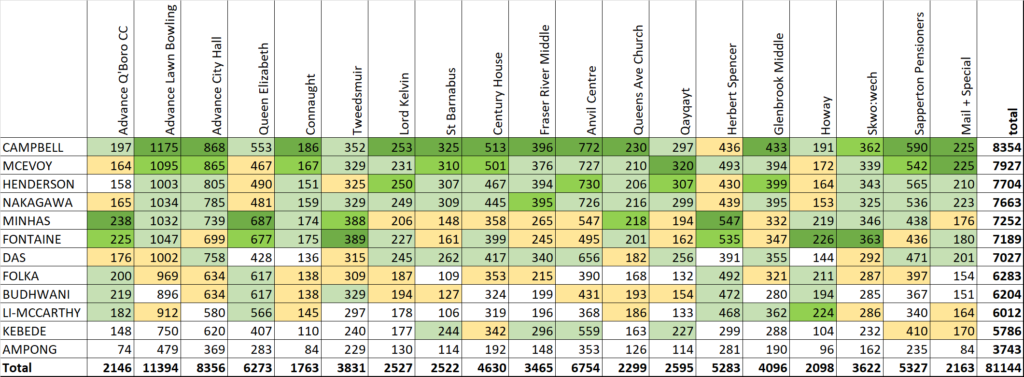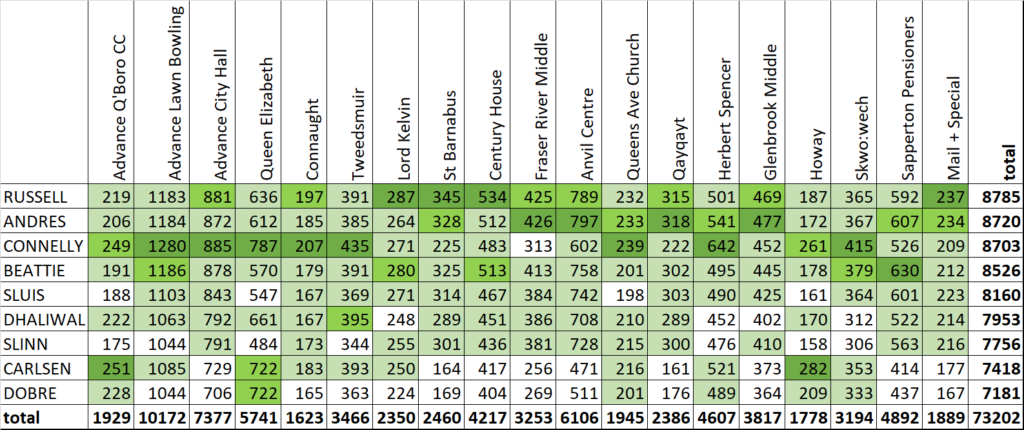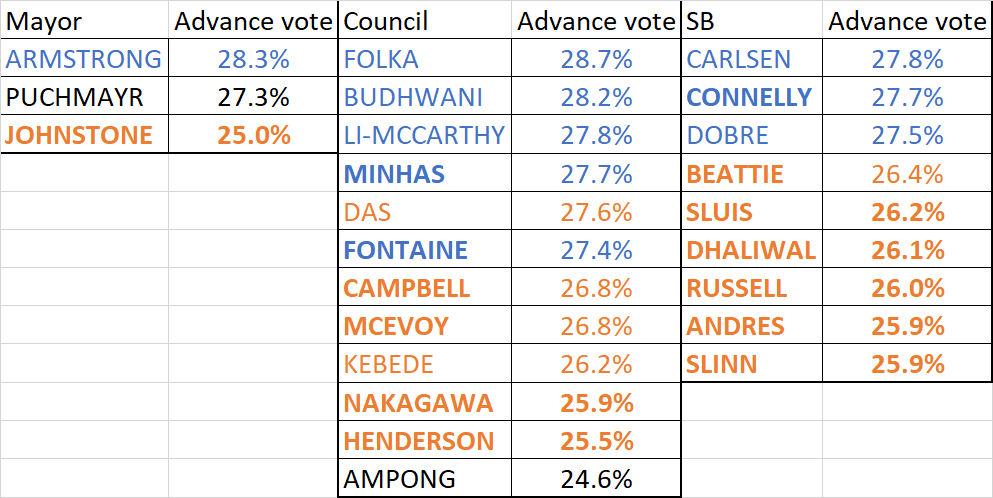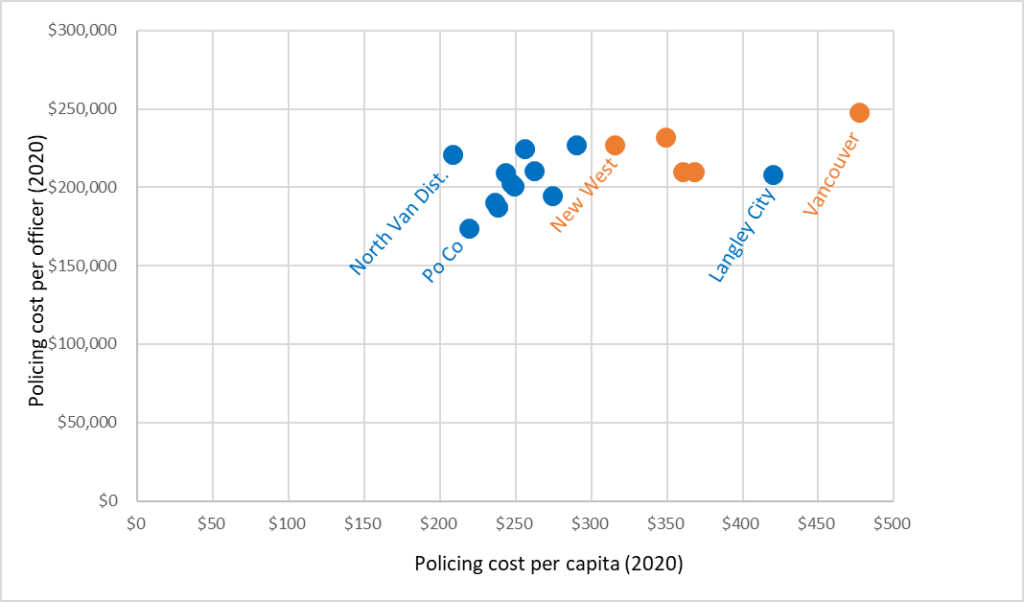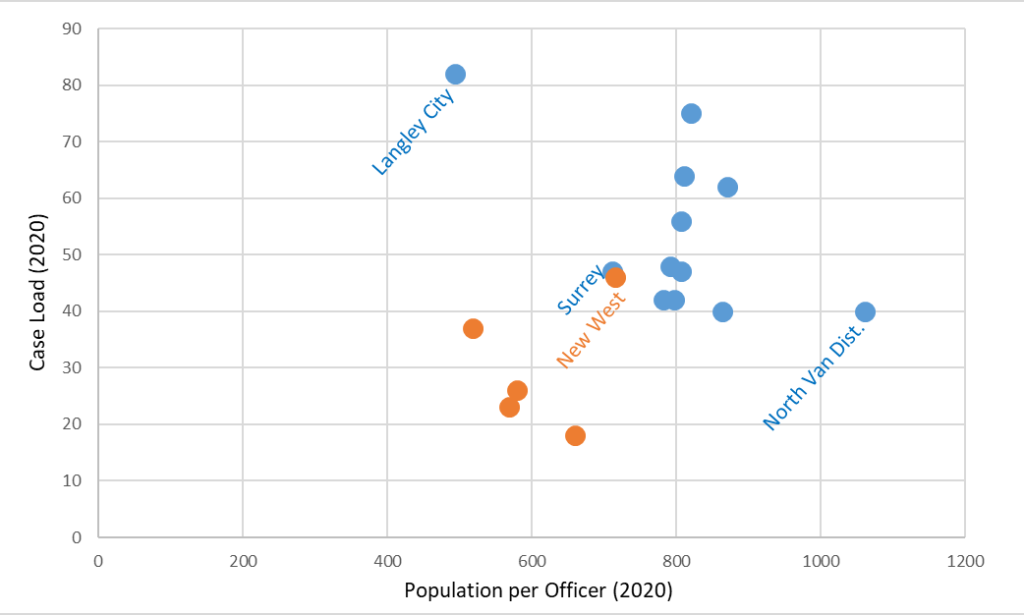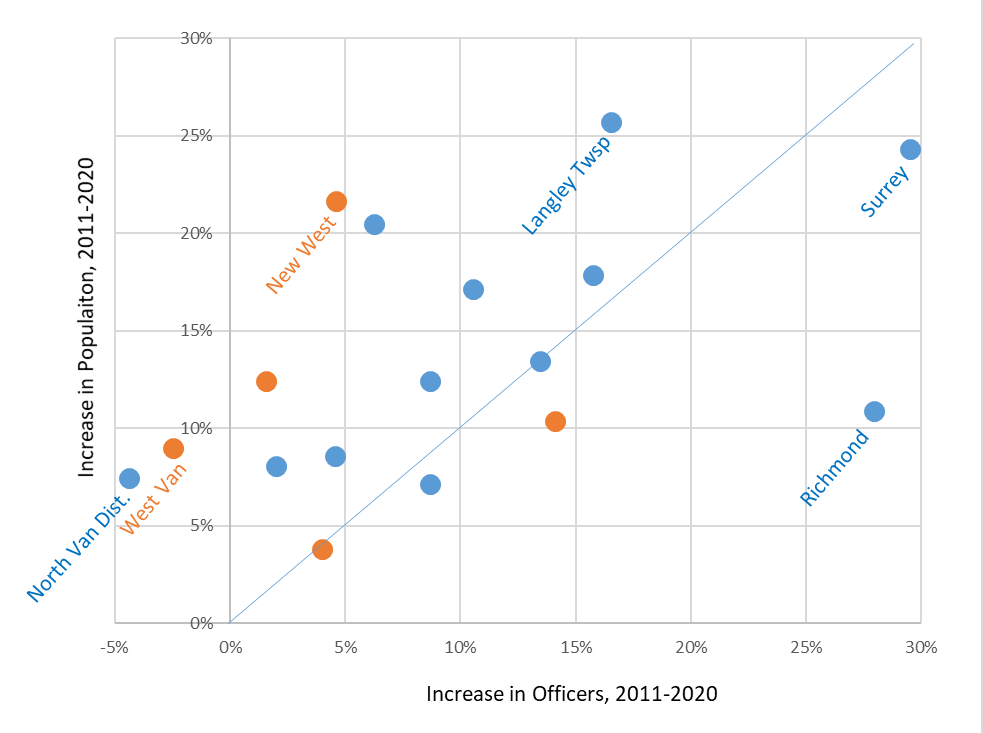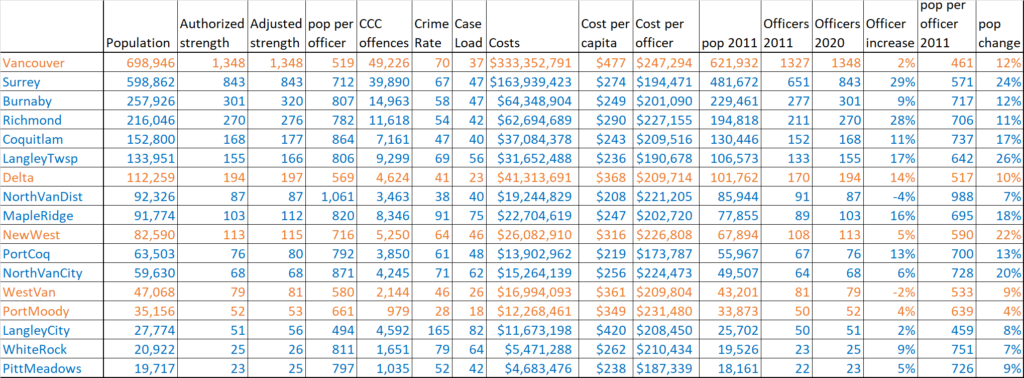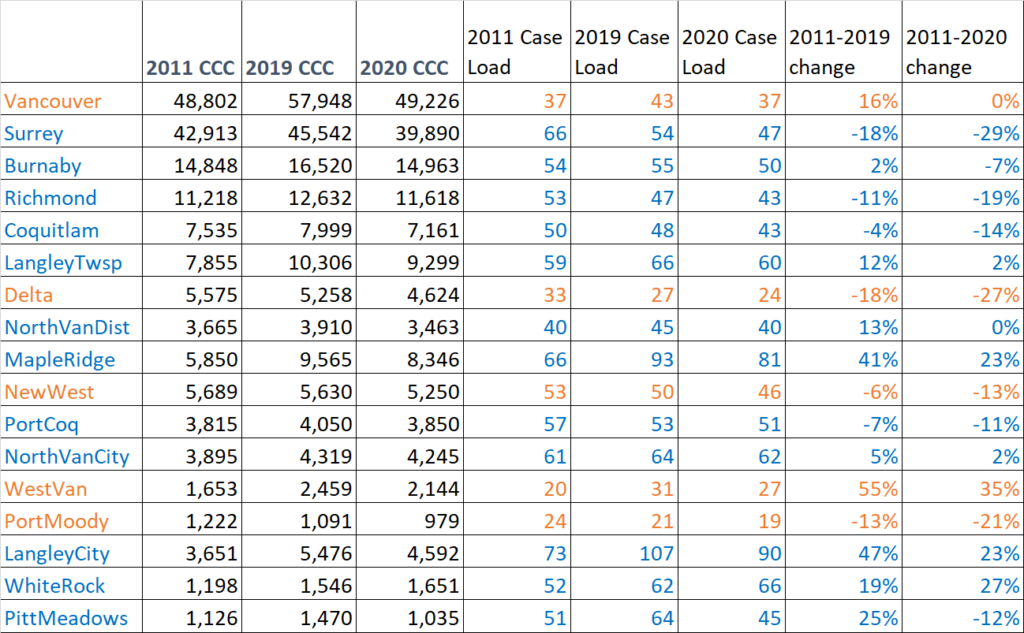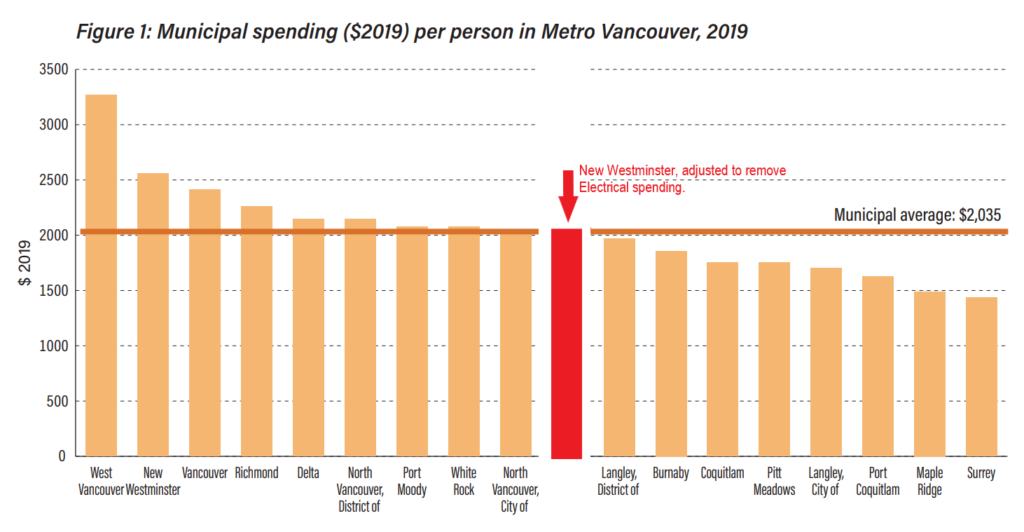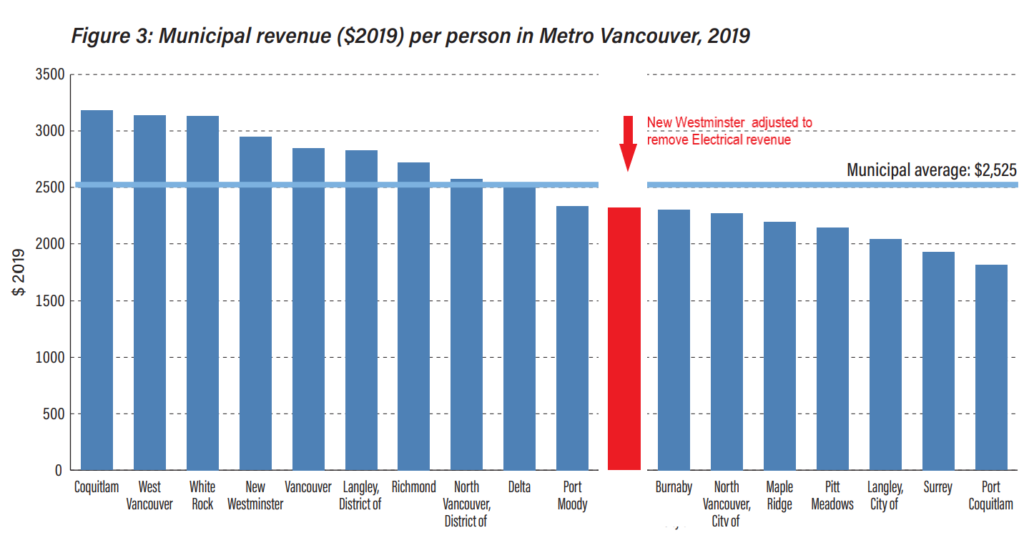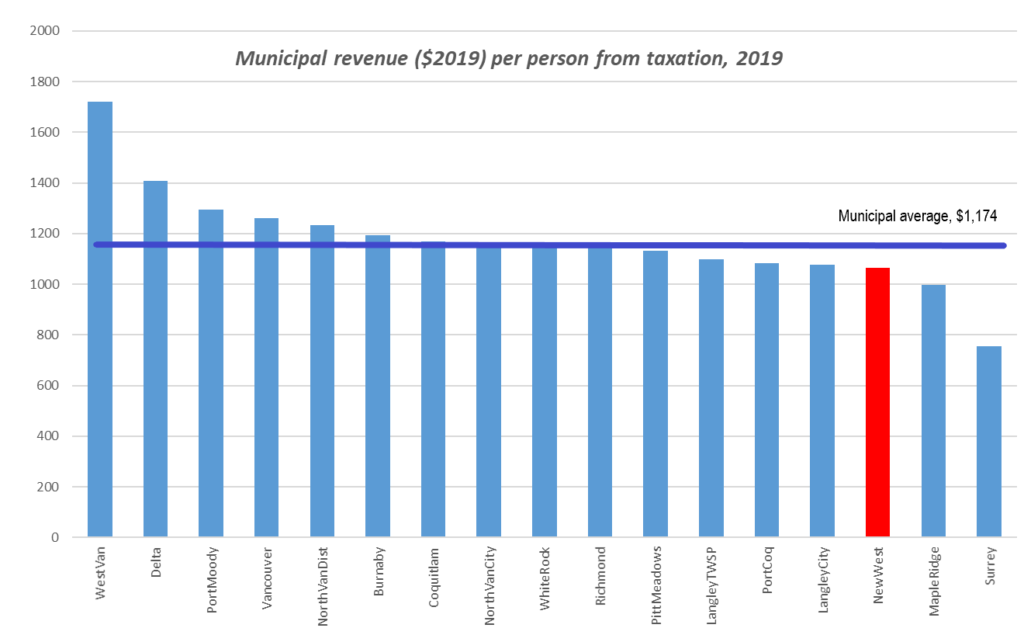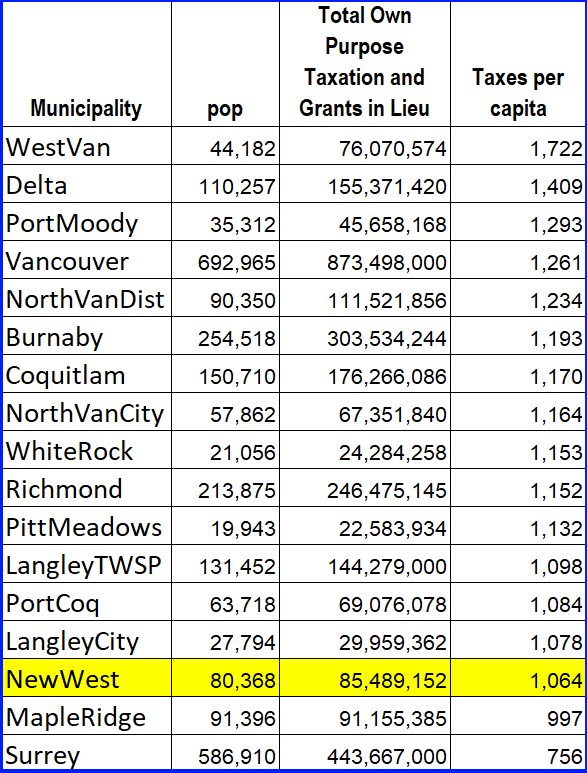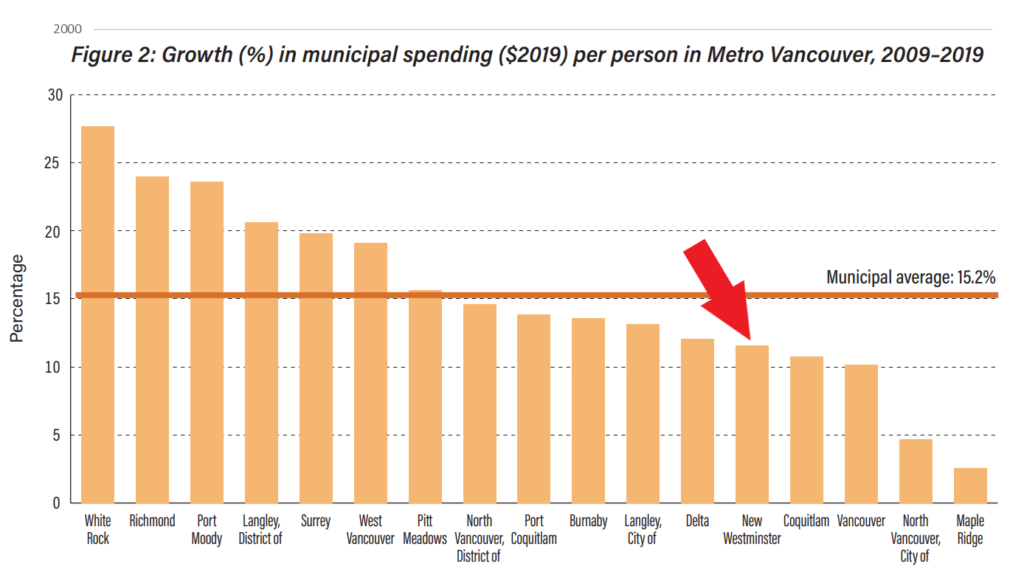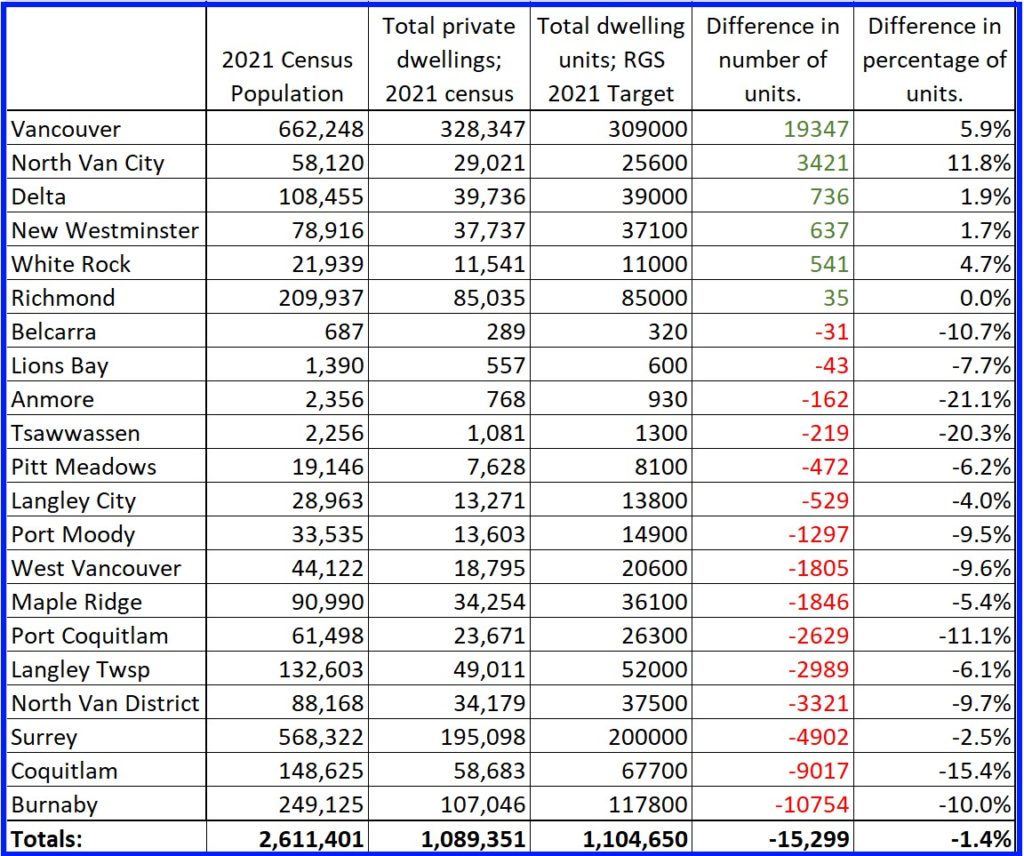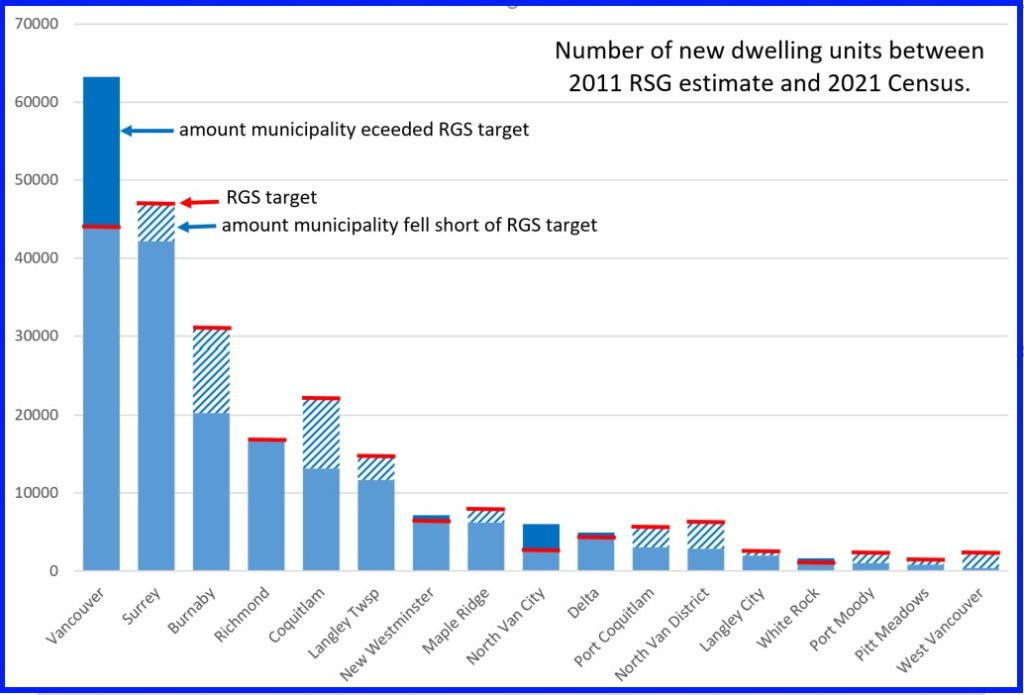In more than 10 years, I don’t think I have gone more than three weeks without blogging, even when I took extended vacations. Sorry folks, it has been busy and this page has dropped in priority over the other engagement and media work I have been doing. Still, I am committed to reporting out every council meeting for the last 8 years, and I’m not stopping now!
The penultimate Council Meeting of the term took us on our annual (excepting COVID disruption) trip to the Queensborough Community Centre, where I was expecting a big turnout, but was surprised to see so few people present.
Nonetheless, we had a full Agenda that started with the following items Moved on Consent:
Appointment of Acting City Clerk
Our City Clerk is seconded to act as our Chief Electoral Officer. This is getting busy, and so for the next three weeks the assistant Clerk is taking over Clerk duties. City Clerk has clearly defined and legislated duties, so we have to officially, through a motion of Council, assign these duties to the Assistant until the Clerk is free again in October.
Budget 2023: User Fees and Rates Review Amendment Bylaws
We reviewed the proposed fee increases for 2023 last meeting, Every department reviews their rates annually, and try to balance three things: Inflationary increases so rate increases are gradual and we don’t get behind on CPI; Reviewing the cost of delivering the service so (ideally – not always) fees cover those costs; and a comparison to fees charged in adjacent communities to make sure the City is not out of touch with what is charged elsewhere. This year staff are recommending most rates and fees go up about 2.4%, to reflect CPI, though some fees are not going up (QtoQ Ferry, Inter Municipal Business Licences, EV charging costs) and some are going up more than 2.4% based on previous policy decisions (e.g. Parking fees are mostly going up to align with the 5-year plan for Parking rates approved by Council after much discussion back in October of 2018).
We reviewed the reports last meeting, allowing staff to prepare the empowering Bylaws. If a Councillor wanted to suggest changes to these Bylaws, last meeting would have been a good time to do that so we could have a fulsome discussion and staff could prepare a response giving Council any extra information they may need (e.g. budget implications) to make a decision. Alternately, they could pull this item from consent and have the discussion now, though staff would be a bit on their heels. Doing it when we are giving the Bylaws three reading later in the meeting can only be interpreted as grandstanding. Ugh. Elections.
City’s Response to the Accessible British Columbia Act
BC has a new Accessibility Act, and will require local governments (and Police and Library Boards) have organizational accessibility plans and accessibility committees, and to develop plans to meet Accessibility Standards for our employees and in service delivery. So we are complying, and staff have given us a bit of a framework of how we will get there.
Infrastructure Canada Active Transportation Fund – Grant Agreement
When Council supported my motion to get staff developing a complete and connected AAA mobility network in the City, they got to work. There is now Federal Government Funds to help pay for this planning work, and we are applying to said grant for one of those grants. Well, we already applied and got approval in principle, but we need to formalize the authorization and delegate the ability to sign a grant agreement. Government.
Manufacture’s Patio Application (Pacific Breeze Winery)
Pacific Breeze is a small winery off Stewardson Way, and they have been operating a small patio during COVID through the temporary measures taken by the City to support these licences. There have been no problems with this operation, so the City is supporting their application with the Province to make this permanent.
Official Community Plan Amendment Section 475 and 476: 501 Fourth Avenue and 408 Fifth Street (Holy Eucharist Cathedral), and 1135 Salter Street – Consultation Report
The Ukrainian Church in Queens Park wants to expand their campus to include some affordable housing and other uses to support their function, which would require an OCP amendment. There is also a property in Queensborough that wants to build residential units that would require an OCP Amendment. We have only seen preliminary plans for both of these, and sent them to the regulatory-required outside agencies and First Nations for consultation before we can consider the OCP amendments further. This report adds 6 more First Nations to the list of those requiring consultation, based on further evaluation by Metro. This report approves the start of that expanded consultation. Both of these projects will also be going through Public Consultation, so more on this to come.
Rezoning Application for Duplex: 376 Keary Street – Preliminary Report
The owner of a single family house in Sapperton wants to build a duplex. This aligns with the OCP, there is no net increase in living units (a laneway house would otherwise be permitted here), no variances, but “duplex” triggers the need for rezoning. This is a preliminary application, so it will go to public consultation, Drop us a line and let us know what you think.
Rezoning, Development Variance Permit, and Development Permit: 114 and 118 Sprice Street – Preliminary Report
The owner of these lots in Queensborough where there are currently two single family homes want to build 10 compact lot single family homes on the largish existing lots. This is a pretty complicated application and an interesting design approach. This is, however, just a preliminary application that will go to public consultation. If you have opinions, let us know.
The following items were Removed from Consent for discussion:
Council Code of Conduct
Our Council has a Code of Conduct, but the Ministry of Municipal Affairs has a new requirement that we “publicly revise” our Code. We have updated ours in review of the development guide provided by the Province and looking at best practices in other communities. This new Code includes a more prescribed method to investigate breaches to the Code, including stricter timelines to investigation and assigning a third party to investigate to put a bit of a fence between Council and the investigation.
This is a good step, but it is not the solution to many of the issues around the region over the last few years when it comes to Council as a respectful workplace. New Westminster has for the most part avoided the worst of this, but I can name a half dozen council colleagues around the region who have been bullied, harassed, and treated in a way that no employer would permit in any other workplace, but do not have the protection of an Employment Standards Act, of an Ombudsperson, or a Union. Updating this Code is a step to better workplace conditions for elected officials, but we still need the Provincial Government to do more.
Introduction of the Local Government Climate Action Program and 2021 Corporate Greenhouse Gas Emissions Update
I might have railed here or there about the end of CARIP, a Provincial funding source to local governments for climate action. The Province heard many local governments (and the organization of which I served as Chair, the Community Energy Association) in the need for a replacement program that all local governments could rely on as base funding for these efforts.
The Best news is that New West will receive just under $300,000 from the CARIP replacement program (Local Government Climate Action Program – LGCAP) in 2022, which is more than twice what we received under CARIP. Similar to CARIP, this program requires some reporting of our efforts to the Province and alignment of our actions with the CleanBC plan – which are things we are already doing in our 7 bold Steps for climate.
This report also outlines our progress toward 2030, 2040, and 2050. Our original targets (compared to the 2010 baseline) were 45% reduction by 2030, 60% by 2040, and net zero by 2050. We also have a Corporate target to be net zero by 2030. As of 2021, we are 29% below baseline, but the curve is definitely bent to the right direction. I’m so proud of the work this council has got done to set bold targets, to empower staff to achieve them, and to get us in a leadership position regionally on this most important of issues. I have heard people suggest New West talks a lot about climate action, but what are they actually doing? Here is the answer; we are getting it done.
Latecomer Agreement for Extended Servicing Costs Related to the Servicing of the Queensborough Special Study Area
This gets a little into the weeds, so hold on. When development happens, it often means we need to build bigger off-side supports for the development. Bigger sewer lines, bigger water lines, bigger pumps for both, roadways, etc. This is usually covered by Development Cost Charges (“DCCs”) – we make the developer pay that cost by charging them per square foot of new density, then when enough developments come along making the increased capacity prudent to build, we use that money to build it.
However, sometimes a large development means capacity needs to be added right away, so we get them to build it right away. But it is also possible that more future development in the area of this first one will mean we want to build that capacity bigger than strictly needed by the first developer, so we don’t have to rebuild it a few years later when the next phase of development happens. One way to manage that is to ask the first developer to build the extra-big capacity, then when the next developer comes along, they can benefit from that expanded capacity. The “latecomer” developer then pays back the first developer for the extra cost of that extra-large capacity that was conveniently built for them.
To do that, we need to agree on what capacity is needed, how it will be built, and how much the Latecomer will pay to tap into that expanded capacity. This requires a legal agreement between the City and first developer. This report is about us developing such an agreement with the company hoping to develop the mixed-us “Eastern Node” neighbourhood in Queensborough. The form of the agreement is laid out by Staff, and Council are asked to approve it. This is a bit unusual for New West because we don’t do much “Greenfield” development, but it is common in other communities.
Permissive Property Tax Exempt Properties for 2023 – Review of Application Result
Some properties don’t pay property tax because they have a statutory exemption set by Provincial Law (Churches, private schools, provincial government agencies, etc.). Others don’t pay property tax, or pay reduced property tax, because the City has determined that there is a community benefit to their being here worthy of reduced taxes. There are some limits to whom we can give this permissive exemption (church accessory buildings, sports clubs, social service providers), and the City has a well written policy to guide new exemptions one we have followed pretty closely in my time on council.
There are several applications for new exemptions this year, three of which were already eligible for Statutory Exemption, and the others that do not meet out policy threshold for new permissive exemption.
Q2 2022 Capital Budget Adjustments
We have started quarterly reporting of our Capital Budget, instead of the previous practice of doing annual updates with occasional ad hoc adjustments as major capital projects proceeded.
As per Local Government regulation, our Capital Budget exists as a 5-year Capital Plan Bylaw, with annual Capital budgets. This means if we want to change the overall budget over 5 years, we need to amend the bylaw, but if we want to move proposed spending from year 1 to year 3, or vice versa, we don’t need to amend the Bylaw, we just need a motion to do so. This gives staff some flexibility to adjust capital planning do deal with minor cost overruns, unexpected savings, or changes in delivery times for different projects – like if we break a truck and need to replace it sooner than expected, or if a construction project gets delayed by supply chain issues.
This quarter, we are adjusting the 2022 Capital Budget by $1.7Million, but are NOT increasing overall spending, but are instead deferring or delaying other projects in the 5 year plan. These changes include:
$0.7M increase in the cost for the Wood Street drainage upgrades;
$0.5M in increased spending on sidewalk repair and replacement;
$0.3M for increased Pier Park fire remediation costs;
$0.2M for expanded scope on some road safety projects.
There is a spreadsheet attached to the report here if you want more details on cost increases and decreases that offset them.
Queensborough Ecological Restoration Project
The little slough on the south end of Ryall Field South and the trail that leads from Ewen at Stanley Street to the Riverfront will see ecological restoration, including refurbishment of the wetlands portions, new trees and native plantings, improves trails and new signage. More than an enhancement of the Perimeter Trail, this will support the ecological network model of our new Biodiversity and Natural Areas Strategy, and the Urban Forest Management Program.
Rezoning Application for Detached Accessory Building: 228 Seventh Street – Preliminary Report
Westminster House wants to expand their existing accessory building for their operation in the Brow of the Hill. I am an almost immediate neighbor, I recused myself from this discussion or decision, as there may be a perceived pecuniary interest.
Update on the Community Action Network Leadership Training Program and the Ethics of Engagement Project
The CAN Leadership Training program has been operating in New West since 2020 to bring people with lived and living experience with homelessness into planning and decision making around municipal efforts to address homelessness and poverty. We now have 16 CAN Leaders in New Westminster who serve on City Advisory Committees, Task Forces and Working Groups.
If you want to know what makes New Westminster innovative, you may want to read this report. It is a great summary of what an inclusive and compassionate City can do to improve people’s lives, and improve the community while we are at it. It is also groundbreaking in how we are expanding Public Engagement to include participatory decision making, and reaching out to residents traditionally not included in Public Engagement efforts.
We then read some Bylaws, including the following Bylaws for Adoption:
Delegation Amendment Bylaw No. 8365, 2022
This Bylaw responds to some recent changes in department structures in Staff, and makes clear who is what delegated authority as required by provincial law. We adopted it.
Zoning Amendment Bylaw (616 and 640 Sixth Street – Text Amendment) No. 8348, 2022
This is the final Bylaw to support the construction of a mixed use, Purpose Built Rental toawer in uptown – the first significant density approved Uptown in a decade, and the first Purpose Built Rental building in longer than that. Council adopted it!
Heritage Revitalization Agreement (108-118 Royal Avenue and 74-82 First Street) Bylaw No. 8339, 2022; Heritage Designation Bylaw (82 First Street) No. 8340, 2022; and Windsor Road Closure, Dedication Removal and Disposition Bylaw No. 8350, 2022.
These Bylaws approve the development of a new 6-8 storey residential building on Royal Ave and the retention and protection of one heritage house on the lot. Council moved ot adopt the Bylaws.
Official Community Plan Amendment (514 Carnarvon Street – Holy Trinity Cathedral) Bylaw No. 8088, 2022; Heritage Revitalization Agreement (514 Carnarvon Street – Holy Trinity Cathedral) Bylaw No. 8089, 2022; and Heritage Designation Bylaw (514 Carnarvon Street – Holy Trinity Cathedral) No. 8090, 2022.
These Bylaws approve the building of a new Mixed-use tower including public amenity use, rental and market Condos adjacent to the HTC, along with a restoration and preservation plan for the 120+ year old Cathedral itself. Council moved unanimously to adopt.
finally, we had two pieces of New Business
Disposition of Unused 2018 Campaign Funds, Mayor Cote
When we fundraise for campaigns, there are all kinds of rules about how that money is spent. Surplus funds at the end of the campaign can be held in Trust by the City for the candidate to pull out next time they run. If the candidate chooses not to run again, it is unclear where those funds go, except into general revenue in the City. The motion here from the Mayor is to move unspent campaign funds to a charitable cause or scholarship program at the discretion of the departing candidate. I support this, as these funds were either the Candidate’s own money, or that of people who politically supported the Candidate, and the candidate is therefore in the unique position of knowing where their supporters would like to see the money go.
Extreme Heat Event Monitoring Centre Initiative
This late addition to the Agenda was nonetheless notable, in that the City is partnering with Fraser Health and Emergency Management BC on an advanced response to Heat Dome events, a response led by New West Fire and Rescue. The plan is to set up a Heat Response Centre to offer immediate care to less-acute cases at Century House, with LPNs and trained Firefighters providing patient monitoring, relieving the Ambulance Service and Emergency room to address more seriously impacted patients. I like this innovative approach, and the partnerships we are able to leverage across municipal and provincial authorities.
And with that, our Penultimate Meeting is a wrap. Tune in a gain on October 3rd for the final meeting of the term, which will no doubt have some weepy moments for a few members of Council, and a bit of fun to mark the occasion. Now back to the Campaign Trail.
